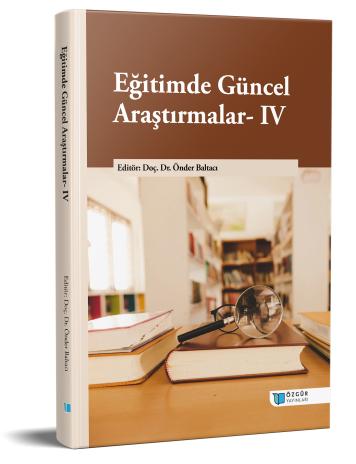
Tarih Derslerinde Kullanılan Görsel Materyallerin Öğrenci Tutumuna Etkisi
Şu kitabın bölümü:
Baltacı,
Ö.
(ed.)
2023.
Eğitimde Güncel Araştırmalar- IV.
Özet
Ortaöğretimde okutulmakta olan tarih dersi, öğrencilere kültür ortamlarının ve medeniyetlerin farklılığı bilincini kazandırmak, öğrenilen fikirleri sorgulamak, görecelik kavramını kavramak, eleştiri becerisini kazanmak ve farklı kültürler bünyesinde evrenseli yakalama becerilerini geliştirmek gibi amaçlarla okutulmaktadır. Dersin işlenişinde kullanılan görsel materyaller bu amaçların olabilmesini sağlayan değişkenlerden biridir. Görsel materyallerin tarih araştırmalarında ve tarih öğretiminde önemli bir yeri vardır. Öğretimi ilginç ve etkili bir biçime dönüştüren görsel materyaller şu şekilde sıralanabilir: Resimler ve fotoğraflar, minyatürler, gravürler, karikatürler, haritalar, grafikler ve zaman şeritleri. Bu çalışmada, Ankara Merkez ve Yozgat Akdağmadeni taşra ortaöğretim kurumları olmak üzere deneysel uygulama sonrasında öğrencilerin tarih dersine yönelik tutum ve değerleri tespit edilmeye çalışılmıştır. Nicel araştırma yöntemli olan bu çalışmada deney ve kontrol gruplu deneme deseni uygulanmıştır. Deney grubunda ilgili konular tarihsel dokümanlar kullanılarak öğrenci merkezli yaklaşımla işlenirken, kontrol grubunda ise konular deney grubunda gösterilen materyallerin düz anlatımı yapılarak işlenmiştir. Uygulama süresince de deney grubuna görsel materyallerden oluşan dokümanlar kullanılarak ders işlenmiştir. Uygulama süreci sonunda ise deney ve kontrol grubuna “Tarih Dersi Tutum Ölçeği” uygulanmıştır. Ölçeğe verilen cevaplar SPSS (Statistical Package for Social Sciences) for Windows 21.0 programında değerlendirilmiştir. Tutum ölçeğindeki 20 maddenin güvenirliği alpha=0.909 olarak çok yüksek bulunmuştur. Yapılan Barlett testi sonucunda (p=0.000<0.05) faktör analizine alınan değişkenler arasında ilişkinin olduğu tespit edilmiştir. Yapılan test sonucunda (KMO=0.896>0,60) örnek büyüklüğünün faktör analizi uygulanması için yeterli olduğu tespit edilmiştir. Faktör analizi sonucunda değişkenler toplam açıklanan varyansı %59.893 olan 4 faktör altında toplanmıştır. Ölçekte 20 maddeden oluşmuş ve Likert tipi şeklinde hazırlanmıştır. Araştırmada kullanılan likert ölçek kişilerin verilen önermelerle ilgili görüşlerini belirlemesi için çok olumludan çok olumsuza kadar sıralanmıştır. Ölçek genel puanı ve faktör (boyut) puanları 5.00-1.00=4.00 puanlık bir genişliğe dağılmaktadır. Tutum ölçeği sonuçlarına göre deney grubu öğrenci tutumları daha olumludur. Taşra ve merkezde deney grubu öğrencilerinin tarih dersine yönelik tutumları benzerlik göstermektedir. Deney gruplarında taşra ve merkezde ki öğrenci tutumu kontrol grubu öğrenci tutumuna göre daha olumludur. Taşradaki deney ve kontrol grubu öğrencilerinin tutumları benzerlik göstermesine karşın merkezde bu durum deney grubu lehinedir.

